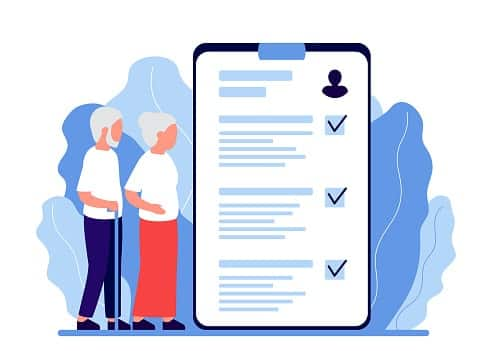How does cancer insurance work?
Cancer insurance is a specialized form of supplemental insurance. It’s not meant to provide standalone coverage or replace a traditional major medical health insurance plan.
"Cancer insurance isn't the sort of health insurance you'd purchase on the health insurance marketplace or obtain through an employer to cover your entire family," explains Brian Martucci, an insurance expert with Money Crashers. "It doesn't cover all your cancer-related expenses, either. But it can help make up the shortfall, especially for patients with high-deductible health plans."
Cancer treatment can easily cost tens of thousands of dollars or more. Cancer patients may also face lost wages and other expenses during treatment. With a lump sum policy, you can use the benefit to cover any expense you want.
Jesse Slome, director of the American Association for Critical Illness Insurance, says that five million Americans currently have a supplemental policy like cancer insurance that pays a cash benefit upon the diagnosis of cancer or a critical illness.
What does a cancer policy cover?
There are two types of cancer insurance plans:
- A traditional policy.
- A lump-sum cash benefit policy.
Traditional policies come in two types:
- An expense-incurred plan pays out a percentage of treatment costs up to a specific limit.
- An indemnity policy, which pays a specified fixed amount for each benefit spelled out in your policy.
Either policy may cover some combination of deductibles, copays, hospital stays, treatments, procedures, tests, trips to out-of-network specialists, lodging and travel. A policy may cover up to a certain amount or percentage for surgery, chemotherapy, doctor visits, ambulance transportation, prescription medication and other associated costs.
Lump sum plans pay a predetermined cash amount if you’re diagnosed with cancer. The payouts on these policies often span from $5,000 to $200,000. The higher the payout, the more expensive your premium.
Unless otherwise specified in your policy, you can use these funds for anything you want.
"A non-tobacco user can expect to secure a cancer indemnity insurance policy covering $20,000 for around $100 a year if they are male or around $165 a year if they are female. Rates, however, are set by individual insurance companies and can easily be much higher," Slome says.
You'll likely pay significantly more if you have a family or personal history of cancer or if you are older when you initiate coverage.
What isn't covered by cancer insurance?
Some cancer insurance policies only cover cancer diagnosis and treatment expenses. Lump sum plans, however, have no limitations on how you use the money.
Additionally, you must purchase cancer insurance before the diagnosis.
Expect a waiting period from the time you pay for coverage and the time benefits can be paid out; if you’re diagnosed with cancer during this interval, your policy won't pay. And if you experience cancer symptoms before purchasing the plan, you may get turned down even if you get a cancer diagnosis after the waiting period expires.
"It can also be challenging if you are diagnosed with a rare form of cancer. In this scenario, it can be difficult to find specialists through an in-network policy, as doctors and specialized treatments may not be conveniently accessible," says Adriana Speach, a cancer health writer for Mesothelioma.com.
"This presents new expenses, such as travel and second opinion costs from out-of-network specialists. For example, mesothelioma patients usually require a multimodal treatment plan, which would involve two types of traditional cancer treatments, such as radiation, chemotherapy or surgery,” Speach says.
Note, too, that your primary health insurance plan may not pay for duplicate benefits offered by a cancer insurance plan due to a coordination of benefits clause. Coordination of benefits (COB) is a process that decides which insurance pays first when you have multiple policies. Check the fine print carefully for this clause.
Lucy Culp, executive director of State Government Affairs for the Leukemia & Lymphoma Society, says that cancer insurance coverage is limited.
"Consumers should be wary of any form of health coverage that isn't comprehensive, including cancer-only plans," she says. "Cancer-only coverage is not required to meet critical patient protections, which means it may not offer the robust coverage that patients undergoing cancer treatment are likely to need, such as prescription drugs and hospital stays. And it could even have a cap for how much coverage it will provide."
Who should buy cancer insurance?
Are you concerned that you may face a cancer diagnosis in the future? Have a history of cancer in your family? Cancer insurance may be right for you. You won’t be able to get coverage after a diagnosis, so if you feel like the risk is high, it’s best to look into it now.
"However, it's important to read the fine print on any policy you're considering. That's because cancer insurance providers aren't prohibited from turning down applicants with pre-existing conditions, including cancer or concerning family health histories," Martucci says.
Alternatively, you may want to explore a critical illness insurance plan, which pays out a lump sum following a diagnosis of several serious conditions, including stroke, heart attack and cancer.
And if you’re already a Medicare recipient, consider a Medigap supplemental insurance policy, which may be a smarter option than cancer insurance.
Which companies offer cancer insurance?
Several insurance providers offer cancer insurance plans online or at insurance agency locations. These providers include:
- Aflac
- Allstate
- American Fidelity
- Cigna
- Colonial Life
- Combined
- Guardian
- MetLife
- Mutual of Omaha
- Physicians Mutual
- United Healthcare
Health insurance finder tool

COBRA
Learn more about COBRA
How much is your annual household income?
How many members are in your household?
Medicare
Medicare costs vary depending on which option you choose.
Learn more about Medicare costs.
Medicaid

Parent's employer-sponsored health insurance

Spouse's employer-sponsored health insurance

Employer-sponsored health insurance

Preferred-provider Organization (PPOs)
Preferred-provider organization (PPOs) plans are the most common type of
employer-based health plan. PPOs have higher premiums than HMOs and HDHPs, but
those added costs offer you flexibility. A PPO allows you to get care anywhere
and without primary care provider referrals. You may have to pay more to get
out-of-network care, but a PPO will pick up a portion of the costs.
Find out more about the differences between plansHealth maintenance organization (HMO)
Health maintenance organization (HMO) plans have lower premiums than PPOs.
However, HMOs have more restrictions. HMOs don't allow you to get care outside
of your provider network. If you get out-of-network care, you'll likely have to
pay for all of it. HMOs also require you to get primary care provider referrals
to see specialists.
Find out more about the differences between plansHigh-deductible health plans (HDHPs)
High-deductible health plans (HDHPs) have become more common as employers look
to reduce their health costs. HDHPs have lower premiums than PPOs and HMOs, but
much higher deductibles. A deductible is what you have to pay for health care
services before your health plan chips in money. Once you reach your deductible,
the health plan pays a portion and you pay your share, which is called
coinsurance.
Find out more about the differences between plansExclusive provider organization (EPO)
Exclusive provider organization (EPO) plans offer the flexibility of a PPO with
the restricted network found in an HMO. EPOs don't require that members get a
referral to see a specialist. In that way, it's similar to a PPO. However, an
EPO requires in-network care, which is like an HMO.
Find out more about the differences between plans
Learn more about individual insurance plans
How to buy cancer insurance online
As with any type of insurance shopping, get cancer insurance quotes from several different providers.
"Visit provider websites to compare prices and begin the application process," Martucci says. "Don't make a purchase until you've compared other types of supplemental insurance, like Medigap, and critical illness insurance."
When completing an application, prepare to answer several personal and health-related questions and provide a history of your health and medical treatment. Provide honest and accurate answers and information.
You likely won't be required to complete a physical exam to be approved for cancer insurance coverage.












